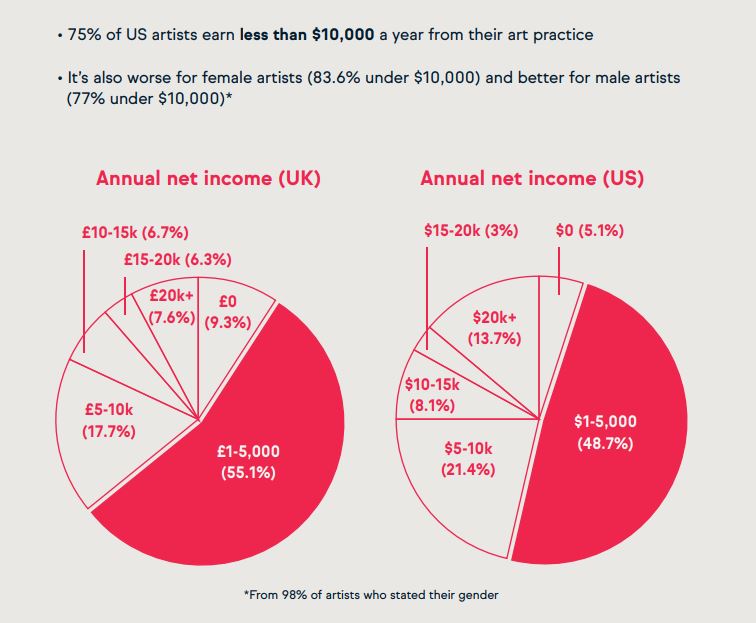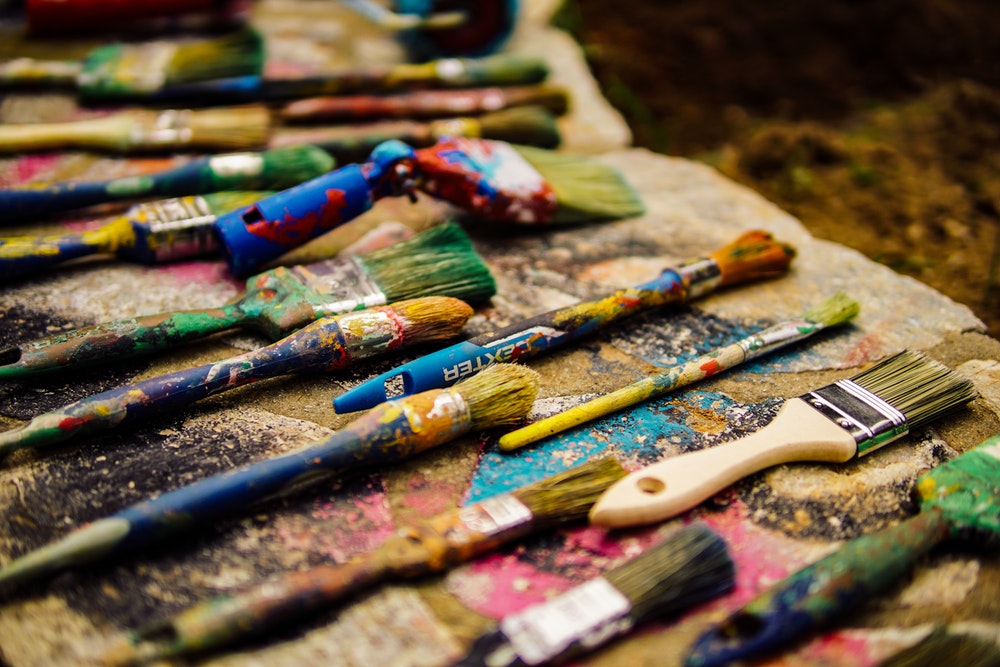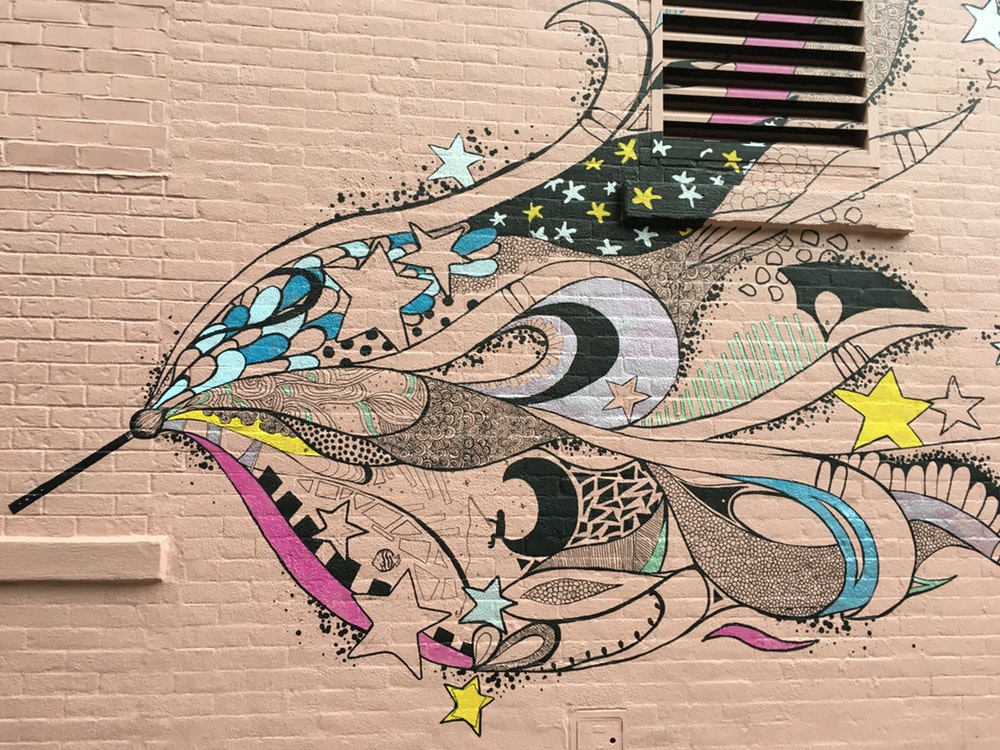Imagine waking up in the morning not foggy-headed from the buzz of your alarm, but wide awake and ready to start the day. You grab a coffee, sit down at your easel, grab your camera, or flip open a fresh page in your notebook and get to work.
For many creatives, this is the dream.
But the harsh reality is that the vast majority won’t ever get to experience making a living from their passion, and will instead spend their lives cramming their creative pursuit into any spare moment they have.
But why is this paradox so true for artists, writers, and makers?
Isn’t there a saying that says if you love something enough the money will follow?
The truth is it’s incredibly hard for creatives to transition from creating for personal pleasure to creating for an audience or clients to a deadline and a budget.
As soon as you bring money into the equation, things get a lot more transactional and the bright sparks of creativity are often quashed under multiple revisions and the limited visions of agencies.
This is where burnout raises its ugly head.
When we start creating for others, we lose the drive that we had when we were creating for ourselves and this can drastically reduce our motivation levels.
In fact, psychological research shows that we are at our most creative when we are drive by intrinsic motivation (a.k.a. motivation that comes from within ourselves), whereas focusing on extrinsic motivation (a.k.a. money and fame) can instantly kill any sense of creativity we had in the first place.
And we’ve all felt pretty drab about a task that doesn’t excite us. When we’re not enamored by a project, it’s almost impossible to do our best work regardless of what reward lies on the other side.
As soon as you take your passion from the desk in your back room to the digital stage of the online world, negative thought patterns like comparisonitis and professional jealousy can consume large chunks of our creativity and lead to real-life burnout.
Why Creatives Experience Burnout When Money is Involved
The online world is an anonymous place where people can be anyone they want to be because they’re hidden away behind the safety of a screen. This is precisely why many online platforms place heavy emphasis on being authentic – and this carries over into the creative world, too.
We’re always told to stay “true to our art” and never sell out. Keep doing what we’re doing and the rewards will follow. Never change for anyone. If you do all that, your creative career will fall into your lap.
That’s a load of old hokey, though.
Making money from anything requires strategic thinking, forward planning, and a helluva lot of perseverance. Trial and error become your two best friends, and that’s before you remember that you have to actually sell something to make money.

Source: The Artfinder Independent Art Market Report: 2017. https://news.artnet.com/market/artists-make-less-10k-year-1162295
For creatives, their passion is pure and authentic in the truest sense.
Even whisper the word marketing or sales and you’re immediately a sell-out or some kind of slick-haired, slimey salesman.
What it boils down to is this: as soon as creatives start selling their passion, whether it’s paintings, photographs, or books, they have to think about marketing and sales. It’s an inevitable part of business.
But thinking about marketing and sales also means studying competitors, comparing other brands, and – god forbid – asking people to buy from you. These things all suck away at creativity, leaving many artists and creators burnt out and feeling like absolute sell outs.
It’s Difficult to Make Money with Art
And then we also have to remember that the creative world is so subjective and at the mercy of buyers, which makes it incredibly difficult to make money with art in the first place.
Sure, there are a number of ways creatives get their business off the ground, like:
- Selling their art through a stock site
- Building an audience and selling work directly
- Working through an agency who take a big fat commission
- Freelancing for corporate brands
But when success doesn’t come instantly (which, just like with anything, it never does), creatives feel slighted and like they’re not good enough – cue burnout and feelings of inferiority.
How to Get Back on Track After Burnout
If you’re in the depths of burnout and are ready to claw your way out of the slump and try again, we’ve got some tricks up our sleeve for you.

Remember, Creativity is a Muscle
We aren’t born with a swirling mass of creativity inside us. Just like anything, practice makes perfect because creativity is a muscle.
When you’re experiencing burnout you’re not giving your creativity a workout, which leads you deeper and deeper into the spiral.
But just like you wouldn’t go all out at the gym after three months away from it, you shouldn’t try and dive in headfirst with your creativity. Instead, you need to flex that muscle regularly and gently to make it stronger.
When you look at it like this, you can see that burnout is simply an injury that needs nurturing back to health.
Mix Up Your Creative Input
Burnout leads to less output. Fact. And, according to Austin Kleon’s piece Problems of Output Are Problems of Input, that means you simply need to mix up what you’re putting in.
What does that mean?
It means that if you’re a photographer, you tend to consume all the content to do with photography, like how to get better, how to improve your shots, how this photographer made millions with one picture, and so on.
But when you do this, you’re creating a bubble of same-ness which doesn’t stimulate the brain. To really get those creative juices flowing, you need to broaden your horizons and consume content that’s categorically not related to your discipline.
Break Things Up
As creatives, we tend to only see the bigger picture. We have this end vision in mind and we know we want to get there, but we often don’t know how.
This can lead to feelings of paralysis as we struggle to make the first step towards our big goal.
To avoid this, you can break things down into smaller tasks. Still think about that big, heart-soaring vision, but also think about the little steps you can take to get you there and work on one of them every day or every week.
Burnout is Probably (and Unfortunately) Inevitable
Burnout is often an inevitable part of life for creatives, particularly those who want to be paid for their passion.
But, like with any business, thinking strategically and taking things day by day will help you get over the paralysis and black slump of burnout and thrive in a way that’s contagious.

